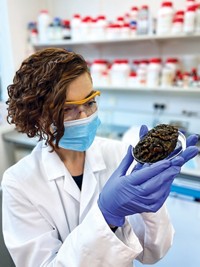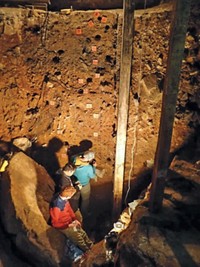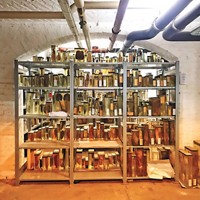Advertisement
Grab your lab coat. Let's get started
Welcome!
Welcome!
Create an account below to get 6 C&EN articles per month, receive newsletters and more - all free.
It seems this is your first time logging in online. Please enter the following information to continue.
As an ACS member you automatically get access to this site. All we need is few more details to create your reading experience.
Not you? Sign in with a different account.
Not you? Sign in with a different account.
ERROR 1
ERROR 1
ERROR 2
ERROR 2
ERROR 2
ERROR 2
ERROR 2
Password and Confirm password must match.
If you have an ACS member number, please enter it here so we can link this account to your membership. (optional)
ERROR 2
ACS values your privacy. By submitting your information, you are gaining access to C&EN and subscribing to our weekly newsletter. We use the information you provide to make your reading experience better, and we will never sell your data to third party members.
DNA
Ancient ecosystem reconstructed using 2-million-year-old DNA
Analysis of sediment samples from northern Greenland reveals traces of plant and animal inhabitants
by Laurel Oldach
December 7, 2022

Researchers have sequenced the oldest DNA ever analyzed and used it to identify the plants and animals that populated northern Greenland 2 million years ago. The now cold and barren landscape was once a warm, grassy forest rich with mastodons, hares, and the ancestors of reindeer, the team reports (Nature 2022, DOI: 10.1038/s41586-022-05453-y). Understanding how those populations adapted as Greenland’s climate cooled may someday help guide conservation efforts to mitigate modern global climate change, the researchers say.
In 2006, a team from the University of Copenhagen and the University of Cambridge collected sediment samples from a geologic formation a few hundred miles from the North Pole. For years, lab members tried unsuccessfully to extract DNA from the samples. The work was so frustrating that the team joked about “the curse of the Kap København formation, because everybody who worked with these [samples] left science,” senior author Eske Willerslev said in a press conference.

DNA binds tightly to clay and silicate particles, which slows decomposition and makes sediment an excellent storage medium. The sediment and chilly temperatures preserved fragments of DNA for more than twice as long as researchers had thought possible—but the tight binding also made the DNA very difficult to recover. After studying how modern DNA sticks to pure minerals, the researchers used a sediment extraction protocol they had optimized for other studies to finally shake loose some ancient DNA fragments. They sequenced the fragments and focused on mitochondrial DNA from mammalian and plant chloroplast genomes, which is more abundant than nuclear DNA. Combined with new bioinformatic approaches and reference databases, these techniques let the research team identify scores of ancient sequences almost to the species level.
“It feels somewhat magical to be able to infer such a complete picture of an ancient ecosystem from tiny fragments of damaged DNA,” Beth Shapiro, a paleogeneticist at the University of California, Santa Cruz, who was not involved with the study, says in an email.
The researchers found that temperate-dwelling species, such as horseshoe crabs and cedar trees, once lived side by side with organisms whose descendants are still in Greenland. Some species have adapted genetically to the colder environment, while others moved south or died out. The researchers hope that understanding how organisms adapted to a hotter ancient world might guide modern conservationists to genetically engineer plants and animals to survive rapid warming today.
According to Stockholm University sedimentary paleogeneticist Peter Heintzman, who was not involved in the study, such work would require much more complete genetic information and more precise sediment dating. Nonetheless, he says, “I’m really excited about the avenues for future research this [study] is going to enable.”





Join the conversation
Contact the reporter
Submit a Letter to the Editor for publication
Engage with us on Twitter